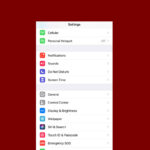Port forwarding helps improve your Xbox gaming experience. It is a setting change on your router that allows your Xbox Series X to connect better with Xbox Live and other consoles. This process is not done on the Xbox itself, but on your network equipment.
By setting up port forwarding, you can create a faster and more reliable connection, which is crucial for online gaming. This method, also called “opening ports,” ensures better connectivity for multiplayer games.
This guide will explain what port forwarding is, why it matters for Xbox users, and how to set it up properly. Opening the right ports on your router can enhance your Xbox’s online experience, leading to smoother gameplay, less lag, and more stable connections.
Why port forward?
- Port forwarding can improve online gaming performance by reducing latency and increasing connection speed
- It can also increase network security by restricting access to the Xbox
What ports need to be open?
- Port 88 (UDP)
- Port 3074 (UDP and TCP)
- Port 53 (UDP and TCP)
- Port 80 (TCP)
- Port 500 (UDP)
- Port 3544 (UDP)
- Port 4500 (UDP)
How to port forward?
- Identify the ports that need to be opened
- Configure the router or network hardware to open those ports
What if a game requires additional ports?
- Some game developers may require additional ports to be opened
- Check the game developer’s website to see if the game needs additional ports
Xbox Guide to Port Forwarding

Why Port Forwarding Matters
Port forwarding can significantly improve your Xbox gaming experience. It allows your Xbox to communicate directly with other devices on the internet, bypassing your router’s Network Address Translation (NAT) system. This can result in:
- Reduced Lag (Lower Ping): Direct connections often mean faster data transfer, resulting in lower ping times and smoother gameplay.
- Improved Multiplayer Connectivity: Port forwarding can help resolve issues connecting to or hosting multiplayer games.
- Enhanced Party Chat Quality: Better connectivity can lead to clearer and more reliable voice communication with your friends.
Essential Ports to Forward for Xbox
| Port Number | Protocol | Purpose |
|---|---|---|
| 88 | UDP | Xbox Live connectivity |
| 3074 | UDP/TCP | Xbox Live party chat and matchmaking |
| 53 | UDP/TCP | Domain Name System (DNS) |
| 80 | TCP | Web traffic |
| 500 | UDP | Session Traversal Utilities for NAT (STUN) |
| 3544 | UDP | Teredo tunneling |
| 4500 | UDP | IPsec NAT Traversal |
How to Forward Ports
- Find Your Xbox’s IP Address: Go to Settings > Network > Advanced Settings on your Xbox.
- Access Your Router’s Settings: Enter your router’s IP address (usually found on the back of the router or in its manual) in a web browser. Log in with your router’s credentials.
- Locate Port Forwarding Settings: Look for a section named “Port Forwarding,” “Virtual Servers,” or something similar.
- Create a New Port Forwarding Rule: Enter the following information:
- Name/Description: Give the rule a descriptive name (e.g., “Xbox Live”).
- Port Range (External/Public): Enter the port number (or range) to be forwarded.
- Protocol: Select UDP or TCP (or both if required).
- Internal IP Address (Private): Enter the IP address of your Xbox.
- Internal Port (Private): Usually the same as the external port.
- Save the Rule: Apply or save the changes to your router’s configuration.
Troubleshooting Tips
- Double-Check: Ensure the port numbers and IP addresses are entered correctly.
- Restart: Restart your router and Xbox after making changes.
- Firewall: Check your computer’s firewall settings to ensure it’s not blocking the ports.
- UPnP: If your router supports Universal Plug and Play (UPnP), enabling it might automatically open the necessary ports.
- NAT Type: Verify that your Xbox’s NAT type has changed to “Open” after port forwarding.
Important Considerations
- Router Compatibility: Not all routers have the same interface. Refer to your router’s manual for specific instructions.
- Security: Port forwarding can open up your network to potential security risks. Only forward ports for applications you trust.
Xbox Port Forwarding
| Step | Description |
|---|---|
| 1. Gather Information: | Locate your router’s model number and IP address. This information is usually printed on the device itself or accessible through its web interface. |
| 2. Access Router Settings: | Launch your web browser and enter your router’s IP address in the address bar. Log in using the administrator username and password (usually found on the router or in its manual). |
| 3. Find Port Forwarding: | Navigate to the “Port Forwarding” or “NAT” settings section. Different router interfaces vary, so consult your manual or the manufacturer’s website if needed. |
| 4. Create a New Rule: | Click “Add Rule” or “Create New Rule” and enter the following information: * Name: Choose a descriptive name like “Xbox Live”. * Protocol: Select “TCP” or “UDP” depending on the port requirement (see Xbox Support for details). * Port Range: Enter the specific port number(s) needed for Xbox Live (e.g., 88, 3074). * IP Address: Enter the IP address of your Xbox console. You can find this in the network settings on your Xbox. |
| 5. Save and Apply: | Click “Save” or “Apply” to activate the rule. |
| 6. Restart Devices: | Reboot your router and Xbox for the changes to take effect. |
Bonus Tips:
- UPnP (Universal Plug and Play): Some routers support UPnP, which automatically configures port forwarding for compatible devices like your Xbox. Check your router settings to see if this option is available.
- DMZ (Demilitarized Zone): This option places your Xbox in a highly exposed zone, bypassing the firewall for unrestricted communication. Use DMZ only as a temporary troubleshooting measure due to security risks.
- Consult Resources: Refer to your router’s manual or the manufacturer’s website for specific instructions and troubleshooting tips. Additionally, Xbox Support provides detailed information on port forwarding for different Xbox models: https://support.microsoft.com/en-au/topic/open-these-network-ports-for-xbox-one-94d5f68a-387c-1982-7163-6e12a4d9e981
Key Takeaways
- Understanding Xbox port forwarding improves online gaming.
- Specific ports are necessary for optimal Xbox network connectivity.
- Open NAT type ensures the best multiplayer experience.
- Port forwarding can solve low-latency game and chat issues.
- Steps for setting up port forwarding on Xbox consoles.
What is Xbox Port Forwarding?
Port forwarding involves configuring your network router to direct internet traffic to your Xbox console. This setup is particularly important for online gaming, as it helps to improve connection stability and speed. By forwarding specific ports, you allow your Xbox to communicate more efficiently with Xbox Live, leading to a better overall gaming experience.
Essential Ports for Xbox Networking
For your Xbox to function optimally with Xbox Live, certain ports need to be open:
- UDP Ports: 88, 500, 3544, 4500
- TCP & UDP Port: 3074
(Source: Microsoft Support)
Why You Need Open NAT on Xbox
Network Address Translation (NAT) type is a significant factor in your Xbox’s online connectivity. NAT determines your compatibility with other players. An Open NAT type is ideal as it offers the least restrictions and the best compatibility in multiplayer environments.
NAT Compatibility Grid
- Open to Open: ✓
- Open to Moderate: ✓
- Open to Strict: ✓
- Moderate to Moderate: ✓
- Moderate to Strict: Limited connectivity
- Strict to Strict: Most restricted
How to Set Up Port Forwarding on Xbox
Setting up port forwarding might seem technical, but it’s quite straightforward. Follow these steps for a smoother setup:
- Find Your Xbox’s IP and MAC Addresses: Under the Network settings on your Xbox.
- Access Your Router: Log into your router’s configuration page.
- Assign a Static IP to Your Xbox: This prevents IP changes.
- Navigate to Port Forwarding Section: Input the necessary ports.
Real-World Applications and User Experiences
Many gamers have shared their success stories after setting up port forwarding. Reports of reduced lag, improved connection stability, and the ability to join more multiplayer games are common. The impact is especially noticeable in fast-paced games where every millisecond counts.
Enhancing Popular Xbox Titles
Games like “Call of Duty” and “Fortnite” greatly benefit from port forwarding, offering a more seamless multiplayer experience.
Port Forwarding on Multiple Consoles
If you have multiple gaming consoles, such as both an Xbox and a PlayStation, port forwarding becomes slightly more complex but is still manageable. The key is to configure ports specific to each console’s requirements.
Xbox Series X and S Networking Guide
With the release of the Xbox Series X and S, networking has become more advanced. The principles of port forwarding remain the same, but these newer consoles might have specific nuances to consider. For an in-depth guide, check out this informative piece on Xbox Series X and S Networking.





